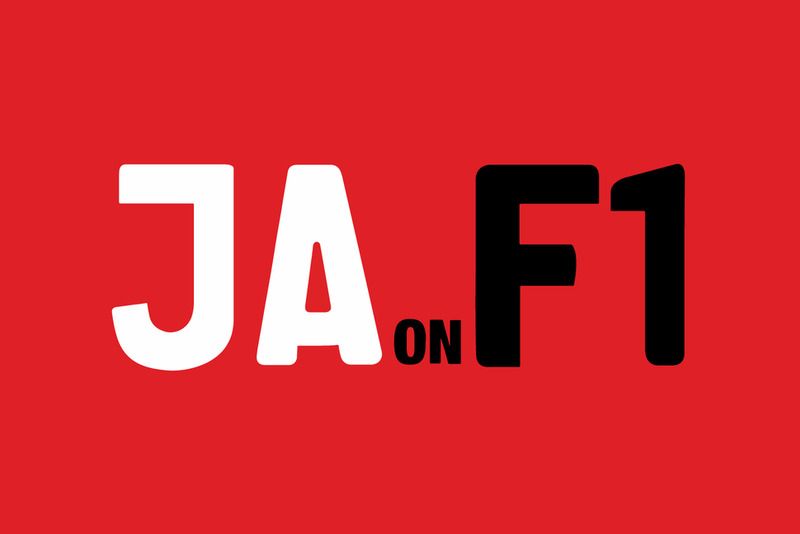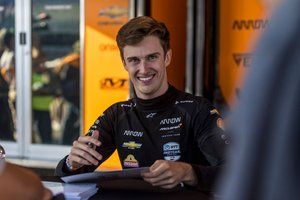Insight: How two highly improbable events swung the outcome of the F1 Monaco GP
The Monaco Grand Prix always triggers plenty of debate and this year’s race is likely to be one of those famous races that people talk about in y...


Motorsport Blog
Motorsport Blog
The Monaco Grand Prix always triggers plenty of debate and this year’s race is likely to be one of those famous races that people talk about in years to come.
It was a race that hinged on two highly improbable scenarios. It was a race which Daniel Ricciardo and Red Bull Racing should have won. Instead it was Lewis Hamilton who triumphed entirely due to strategic decision-making and pit stop execution; both his and Mercedes’ as well as Red Bull’s.
Looking at the bigger picture, on a wet/dry day this was one of those races where virtually all of the race outcomes for drivers were decided by strategy decisions. There were many decisions to take; the three podium finishers all chose a different dry weather tyre compound once the track was ready for slicks.
So let’s take a deep dive into why people’s races turned out as they did and how hard it was at various junctions to make the right decision.

Pre-Race Considerations
After a sunny weekend, it rained on race day. This was the first proper chance for teams to race the Pirelli wet tyres, but without the teams having any real data about them, least of all how they might perform on the low-grip Monaco circuit or how long they might last on a drying track.
Meanwhile Pirelli had brought along the Ultra Soft tyre for the first time to a Grand Prix, a tyre that was designed to be around half a second per lap faster than the Super Soft, less durable but likely to get up to temperature more quickly than the Supersoft and Soft tyres. Or so it was thought..

How two highly improbable scenarios swung the outcome of the race
In Spain two weeks earlier Mercedes gifted the race victory to Red Bull when Lewis Hamilton and Nico Rosberg took each other out on the opening lap.
In Monaco Red Bull returned the favour, making a mess of Daniel Ricciardo’s strategy and pit stop execution when he had the race under control with a 13 second lead.
But the most remarkable thing about the race was the probability of two very unusual things happening in succession that decided it.
Lewis Hamilton had an unusually slow out lap from his pit stop - seven seconds off the pace - which looked to have gifted the race back to Ricciardo. But then Red Bull didn’t have the tyres ready for Ricciardo at his stop a lap later, so the win swung back to Hamilton.
Hamilton had lost time in the wet tyre conditions at the start behind his teammate Rosberg, until the German let him through on Lap 16.
At this point he was 13.4 seconds behind Ricciardo and of the front-runners behind them, Vettel, Alonso and Hulkenberg had already stopped for Intermediate tyres.

Over the next five laps, the gap from Ricciardo back to Rosberg grew by five seconds, before he pitted for Intermediates, indicating that one Mercedes at least was not thriving on the wet tyres on a drying track.
This stop left a gap back from Ricciardo to third place Rosberg of 43 seconds. So there was no pressure on Ricciardo from behind Hamilton to make a stop. The pace of the leading intermediate runners, Perez and Vettel was the same as Ricciardo’s, so there was no evidence that at this point the intermediate tyre was faster.
It was now just about Ricciardo’s pace relative to Hamilton on similar wet tyres and protecting a lead. Hamilton had closed initially when he cleared Rosberg, but Ricciardo was able to then hold him at 12 seconds.
The golden rule of race strategists in a situation like this is “mirror the car behind”, in other words, you have track position, so don’t be the first one to make a move; instead mirror whatever move the ‘hunter’ behind you makes and you have him covered.
However, once Rosberg stopped, Red Bull decided that this was the moment to pit Ricciardo for intermediates. Bear in mind that, although no one knew it yet, we were still six laps away from the first drivers making the move onto slicks, which were Ericsson and Magnussen.
After the race Ricciardo correctly argued that there was no hurry to pit him for intermediates, as it put him ‘in a race with Hamilton we didn’t need to be in’.
More importantly it gave up the most precious thing of all at Monaco, which is track position.
The key to the decision was the lack of knowledge about the new wet tyres from Pirelli. With so little knowledge, it was considered a risk to keep running on them. But when Ricciardo was ahead, he was able to monitor the gap to Hamilton and there was no need to be the first to move.
Hamilton would have had to be at least nine seconds closer than he was to be able to jump Ricciardo by stopping first and the chasing pack were over 40 seconds behind.

Once Red Bull blinked, Mercedes were presented with an opportunity to miss out the intermediate tyre stage and hold out to move directly onto the slicks. But it was risky, due to the lack of knowledge about the wet tyres.
On Lap 24 the intermediate runners began to find more pace; the lap times came down by three to four seconds per lap. But as Hamilton had half a minute advantage over third place, he had nothing to lose by staying out.
Ricciardo easily caught Hamilton. At this stage the race was still likely to be Ricciardo’s as the Australian had fresh intermediates on which to attack once Hamilton pitted for slicks, which he did on Lap 31.
This decision was triggered by Sergio Perez’ pace, which was matching the intermediate tyre runners. That is what a strategist is looking for in the crossover from inters to slicks.
As for the decision to put Hamilton onto UltraSofts, that was all about the speed of the tyre warm-up. Having got himself into a position where he was ahead of Ricciardo, Mercedes knew that Ricciardo would be able to attack on the next lap and then pit, so they needed the tyre that was going to be there for Hamilton straight away on his out lap and especially to race Ricciardo when he went into St Devote as the Australian came out of the pits.
But Hamilton left the door wide open for Ricciardo with a slow out lap, seven seconds off the pace! So Red Bull just needed a conservative pit stop to regain the lead.
There was a choice of three dry compounds to fit to the car. They had seen Mercedes fit Ultrasofts for Hamilton, which was ambitious with 47 laps to go, double the length of any stint managed in practice.
But Mercedes was prepared to take that risk; all the emphasis in the tyre decision was on that first lap out of the pits for Hamilton. At the back of their minds was the likelihood of more Safety Car and Virtual Safety Car laps to give the tyres a rest.
Crucially, Red Bull pitted a hard charging Max Verstappen on the same lap as Hamilton. He was put onto the Soft tyre.
This meant that the team was resetting from that stop when the call was made to bring Ricciardo in. There are two tyre sets ready for each driver on a rack in the garage at any given time in the race.
The problem was that, because the pit wall in Monaco is above the garage, rather than looking into it, the strategy team missed a simple step in the process, which is to confirm that the tyre set they wanted - a new Supersoft - was actually in the garage. It was in fact around the back.

This caused the 10 second delay, which cost Ricciardo the race. He rejoined just behind Hamilton, despite a 35 second stop, where 25 seconds was the norm.
Why the change of plan to go to the Supersoft? Mercedes had surprised Red Bull by taking the UltraSoft. The decision not to put Ricciardo on Softs like his team mate, but to go SuperSoft was a compromise between the better tyre warm up of the Supersoft, for what was going to be a close call into Turn 1 with Hamilton, against lasting 46 laps to the finish, which Red Bull was not confident of doing on UltraSofts.

Perez and Force India win the strategy game
If ever there was a race result, which was down to strategy, it was Force India’s fantastic podium with Sergio Perez, who had started the race in seventh place on the grid.
Because of the decision to start the race behind the Safety Car, there was no scope to make up places at the start. The Mexican held seventh for the opening stint, until Ferrari pitted Vettel from fourth place for intermediate tyres on Lap 13. He was the first of the front-runners to do so. Button had pitted in Lap 8 but his pace was still well short of the leading cars by the time the decision was taken at Ferrari.
Ferrari’s motive for the stop was clear; Vettel had Rosberg and Hamilton just ahead of him, with Rosberg clearly off the pace – so there was an opportunity to jump them by stopping first. Their calculation foundered on the fact that Felipe Massa in the Williams had no incentive to make a stop to intermediates and so Vettel came out behind him and stayed there for six laps. Massa pitted on the same lap as Rosberg, so the Mercedes stayed ahead, but then Sergio Perez came out between them, having delayed his stop to intermediates. He also jumped Hulkenberg by doing this.
At the second stop to slicks, he did the opposite and pitted early, undercutting Rosberg. Force India put him on the Soft tyre, which turned out to be the best one to be on.
Vettel stopped a lap later to cover Perez, but to everyone’s astonishment, the soft tyre on Perez’ car had great warm up and he retained his position over Vettel, who took the same tyre. As there was no pace offset from the tyres, Vettel was stuck behind Perez for the rest of the race.
The UBS Race Strategy Report is written by James Allen with input and data from several of the leading F1 teams’ strategists and from Pirelli.
RACE HISTORY & TYRE USAGE GRAPH, Kindly Supplied by Williams Martini Racing - Click to Enlarge

Be part of Motorsport community
Join the conversationShare Or Save This Story
Subscribe and access Motorsport.com with your ad-blocker.
From Formula 1 to MotoGP we report straight from the paddock because we love our sport, just like you. In order to keep delivering our expert journalism, our website uses advertising. Still, we want to give you the opportunity to enjoy an ad-free and tracker-free website and to continue using your adblocker.












Top Comments